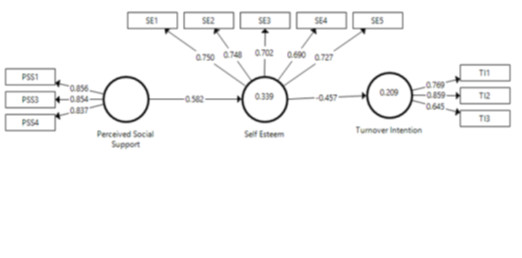


Indian Journal of Science and Technology
Year: 2020, Volume: 13, Issue: 28, Pages: 2858-2865
Original Article
Noreen Hassan Syed1*, Nizamuddin Channa2, Imam Uddin Khoso2
1Ph.D. Scholar, Department of Business Administration, University of Sindh Jamshoro, 76080, Pakistan. Tel.: +92-331-3619336
2Professor, Department of Business Administration, University of Sindh Jamshoro, 76080,Pakistan|
*Corresponding Author
Tel:+92-331-3619336
Email:[email protected]
Received Date:21 June 2020, Accepted Date:22 July 2020, Published Date:07 August 2020
Objectives: Study indicates the importance of social support and employee personality dimension- self-esteem to counter withdrawal behaviours and help retain employees at the demanding time of mergers. Methods/Statistical analysis: Total 318 responses were collected from employees of Muslim Commercial Bank (MCB) undergoing a merger with NIB bank in Pakistan by using convenience sampling. Data was analyzed using a two-step method of PLS-SEM. Findings: The study found a positive relationship of perceived social support to self-esteem while negative relationship of self-esteem found with turnover intention. Furthermore, the relationship of perceived social support and turnover intention negatively mediated with indirect effect of self-esteem. Novelty: Study is unique in a sense that has incorporated employees’ own belief- self-esteem as an important mediating mechanism to reduce employee withdrawals during organizational changes.
Keywords: Perceived social support; self-esteem; turnover intention; merger
© 2020 Hassan Syed et al..This is an open-access article distributed under the terms of the Creative Commons Attribution License, which permits unrestricted use, distribution, and reproduction in any medium, provided the original author and source are credited. Published By Indian Society for Education and Environment (iSee).
Subscribe now for latest articles and news.